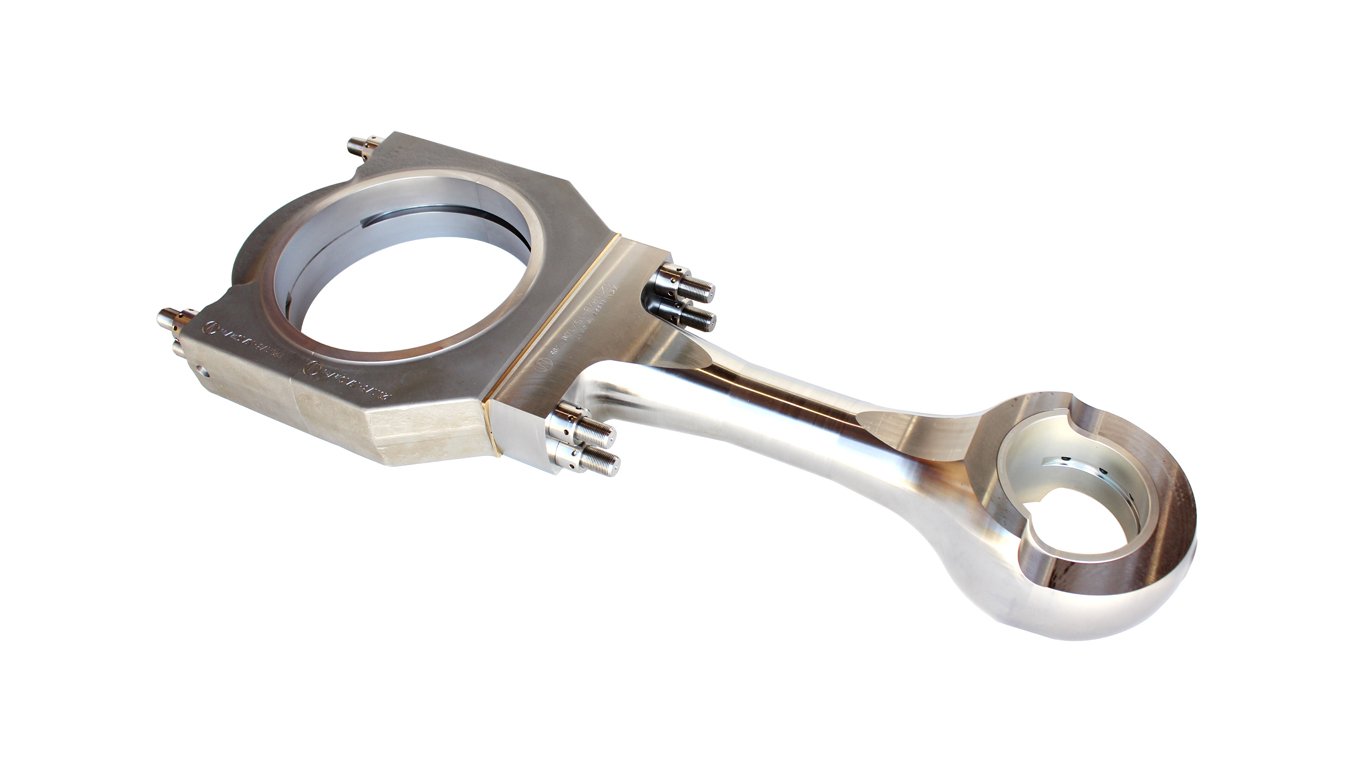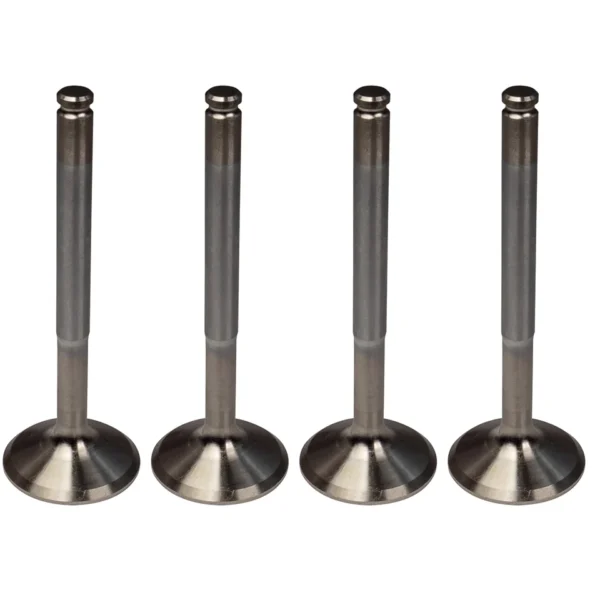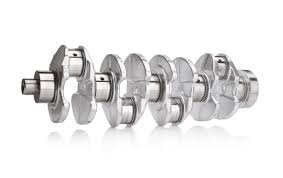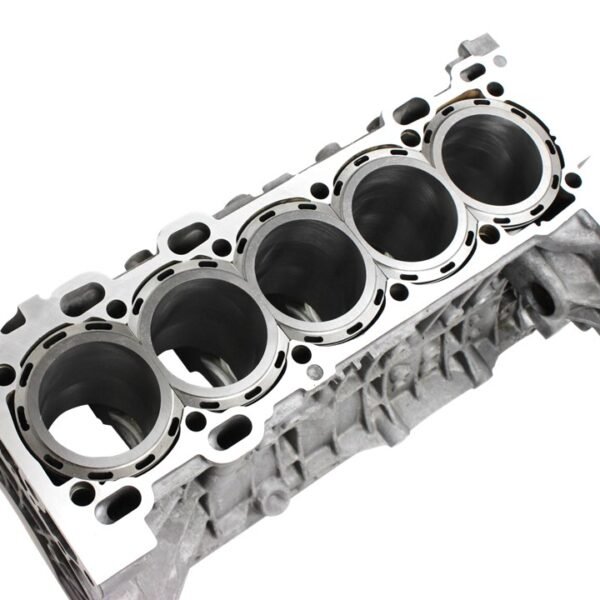A marine engine connecting rod is a crucial link in the engine’s power train, transmitting the force generated by the combustion in the cylinder from the piston to the crankshaft.1 It converts the reciprocating motion of the piston into the rotational motion of the crankshaft.2
Function and Design
The primary functions of a marine engine connecting rod are:
- Force Transmission: It efficiently transfers the immense downward force from the expanding gases on the piston to the crankshaft, transforming linear force into rotational torque.3
- Motion Conversion: It acts as a rigid link that facilitates the conversion of the piston’s reciprocating (up-and-down) motion into the crankshaft’s rotating motion.4
- Support: It supports the piston and allows it to oscillate during its stroke.
Connecting rods are precision-engineered components, typically manufactured from high-strength forged steel due to the severe dynamic loads they withstand.5 Key design elements include:
- Small End (Piston End): Connects to the piston pin (also known as the gudgeon pin). It often contains a bush bearing (usually bronze) to accommodate the oscillating motion of the piston pin.6
- Shank (Body): The long, central part of the rod, typically I-beam shaped for optimal strength-to-weight ratio.
- Big End (Crankshaft End): Connects to the crankpin journal of the crankshaft.7 This end is usually split into two halves (connecting rod cap and rod body) to allow assembly around the crankshaft. The big end houses shell bearings (similar to main bearings, often tri-metal) that provide a low-friction surface for rotation on the crankpin.
- Connecting Rod Bolts: High-strength bolts secure the big end cap to the rod body, maintaining precise clamping force under extreme conditions.8
Forces and Challenges
Connecting rods are subjected to a complex interplay of forces, including:
- Compressive Forces: During the power stroke and compression stroke.
- Tensile Forces: During the exhaust and intake strokes, and importantly, due to the inertia of the piston and rod itself at top dead center (TDC) and bottom dead center (BDC).
- Bending Forces: Due to side thrust from the piston and crankshaft journal.
- Buckling Forces: Potential for the rod to bend under high compressive loads if not properly designed or if material integrity is compromised.
Common issues and critical considerations for connecting rod integrity include:
- Fatigue Cracks: The most severe concern, often initiating from stress concentration points (e.g., bolt holes, fillet radii) due to repeated cyclic loading. These can lead to catastrophic failure, often resulting in engine “throwing a rod.”
- Bearing Failures: Overheating, scoring, or wiping of the small end bush or big end bearings due to inadequate lubrication, contaminated oil, or overloading.9 This can lead to increased clearances, knocking, and eventual damage to the crankpin or piston pin.
- Bolt Loosening/Failure: Critical for big end integrity. If bolts loosen or stretch, it can lead to bearing damage, cap separation, and complete engine failure.
- Bending/Distortion: Can occur due to hydraulic lock (liquid in the cylinder), severe detonation, or impact, leading to misalignment and increased stress on bearings and other components.10
- Small End Bush Wear: Normal wear over time will increase play between the piston pin and the connecting rod.
Maintenance and Monitoring
Rigorous maintenance and monitoring are crucial for marine engine connecting rods:
- Bearing Inspection/Renewal: Both small end bushes and big end bearings are routinely inspected and replaced as part of planned maintenance, or whenever excessive wear or damage is suspected.
- Connecting Rod Bolt Management: Bolts are often considered single-use components in larger engines due to stretch, and specific torque or turn-of-nut procedures are followed during assembly. Non-destructive testing (NDT) may be used on re-used bolts (if permitted) to check for cracks.
- Clearance Checks: Regular measurement of small end and big end clearances to ensure they are within manufacturer specifications.
- Lubricating Oil Analysis: Monitoring oil quality and cleanliness is vital for bearing health.
- Visual Inspection: During overhauls, the rod shank is inspected for any signs of bending, cracks, or damage.
The connecting rod’s failure can lead to severe engine damage, including a ruptured crankcase, and costly repairs. Proactive maintenance and adherence to manufacturer guidelines are paramount for ensuring vessel operational reliability.
We offer an extensive range of marine engine brands and their associated spare parts, providing comprehensive solutions for both main propulsion and auxiliary power needs across diverse vessel types. Our supply capability covers various generations and models, ensuring support for a wide array of marine applications.
Featured Brands and Engine Series/Models:
SULZER:
- Two-Stroke Engines:
- RD/RND Series: RD68, RND76, RND76M, RND90, RND90M (Classic large-bore, low-speed engines, still in operation).
- RLA/RLB Series: RLA(B)56, RLA(B)66, RLA(B)76, RLB90 (Developed two-stroke designs).
- RTA/RT-Flex Series: RTA38, RTA48(T), RTA52, RTA58, RTA62, RTA72, RTA76, RTA84, RTA84M, RTA84C, RTA96 (Modern, fuel-efficient, electronically controlled two-stroke engines).
- Four-Stroke Engines:
- Z Series: ZL40/48, 16ZAV40S (Medium-speed engines).
- RF Series: RF44, RF56 (Often used for auxiliary power or generator sets).
- TAD Series: TAD36, TAD48 (For specific applications).
MAN (including pre and post-MAN B&W models):
- Two-Stroke Engines (KZ, KSZ, K, L, S, MC/MC-C, ME/ME-C): 40/54A, 52/90N, 57/80C, KZ57/80F, KSZ70/125, KSZ78/155, 90/160A, 52/55L, 58/64, 90/190C, L60/105E, 70/120E, 70/125C, L, KSZ78/155A, KSZ70/125B, L52/55A, 40/45 (A broad spectrum covering main propulsion and auxiliary engines).
B&W (Burmeister & Wain – prior to MAN B&W merger):
- MC/MCE Series: L35MC, L60MC, L80MC, L55GFCA, L80GFCA, L80GB, 74VT2BF, K62EF, K74EF, K84EF, K45GFC, K67GFK, K80GFK, K90GFS, 45HU, L70MC (Various generations of two-stroke diesel engines).
- MC-C/ME-C Series: L50MC, S60MC, S70MC, K80MC, S80MC, K90MC-C, L67GFCA, L90GB (Electronically controlled and conventional two-stroke engines).
- VT2BF/EF Series: 50VT2BF, 62VT2BF, K84EF (Older models still in service).
MITSUBISHI:
- UEC/UET Series: UEC37L/LA/LS, UEC45HA, UEC60L/LA/LS, UEC45L/LA/LS, UET45/75C, UEC52/125H, UEC52L/LA/LS, UET45/80D, UEC52/90D, UEC(T)52/105D, UEC45/115H, UEC37/88H, UEC37H (Mitsubishi’s proprietary two-stroke and some four-stroke engine series).
PIELSTICK:
- PA Series: PA6, PC3, PC2-2, IHI PC2-5, PC4, PC2-6, PC4-2L, PC4-570, PA5 (High-speed, compact four-stroke engines, commonly used for generator sets or auxiliary propulsion).
AKASAKA:
- UET/UEC/DM/AH Series: UET45/80D, UEC52/105D, DM51SS, UEC 60/150H, UEC 60H, A31, A34, A37, A41, AH27, AH28, AH30, AH36, AH38, AH40, DM30, DM36, DM38, DM46, DM47 (A prevalent engine brand, particularly in Japanese-built vessels).
DEUTZ:
- RBV/TBD/BVM Series: RBV8M358, RBV8M540, RBV16M640, TBD620L6, BVM350, BVM540, BF6M716 (Various four-stroke medium- and high-speed diesel engines for auxiliary and smaller main propulsion applications).
HANSHIN:
- EL/LH/LU/LUN/LUD/LUS Series: EL30, EL32, EL35, EL40, EL44, LH28RG, LH31G, LU28(A,R,G), LU32, LU35, LU38, LU46(A), LU50, LU54, LUN28, LUN30, LUD32, LUD35, LUS38 (Another significant engine brand commonly found in Japanese vessels).
NIIGATA:
- MG/M Series: MG40X(EX), M34X, 6M28BF, TM31X (Medium-speed diesel engines, typically used in small and medium-sized vessels).
MAK:
- M/MU/AK/AKM Series: M332, M453AK, MU551AK, MU552AK, M601, MU452AK, 451AK, 6M453AK, 9M453C, 6M601C, 8M601 (Medium-speed four-stroke engines, widely used in various marine applications).
WARTSILA:
- 20/22/26/32/38/46/GD/TKR Series: 22, 32, 31, 26, 20S, 28, 38, 46, 32GD, 46GD, 14, TKR22, HFR-V32, NOHAB (Wärtsilä’s broad portfolio of medium- and high-speed diesel engines for main propulsion, auxiliary, and generator sets).
DAIHATSU:
- PS/PKT/DS/DL/DK/PL Series: PS-18, PS-22, PS-20, PS-26, PS-30, PKT-14, PKT-16, PKTD-16, DS-18, DS-22, DS-26, DS-28, DS-32, DL-14, DL-16, DL-19, DL-20, DL-22, DL-24, DL-26, DK-20, PL-24 (Compact and reliable engines primarily used for auxiliary power and generator sets).
CUMMINS:
- BT/CT/NT/KTA/QSK/QSM Series: 4BT3.9, 6BT(A)5.9, 6CT8.3, NT(A)855, N14, KTA19, KTA38, KTA50, QSK19, QSM11 (Robust and durable engines for marine auxiliary power, generator sets, and some smaller main propulsion applications).
CATERPILLAR:
- 3000/3100/3300/3400/3500/3600 Series & C Series: 3054, 3056, 3066, 3106, 3126, 3306, 3406, 3408, 3412, 3508, 3512, 3516, 3606, 3608, 3612, 3616, 3618, C1.5, C2.2, C7, C9, C10, C12, C15, C16, C18, C30, C32 (Reliable and widely used engines across a vast range of main propulsion, auxiliary, and generator set applications).
SCANIA:
- DI Series: DI 09, DI 13, DI 16 (High-performance diesel engines designed for marine applications, typically used as auxiliary and smaller main propulsion engines).




